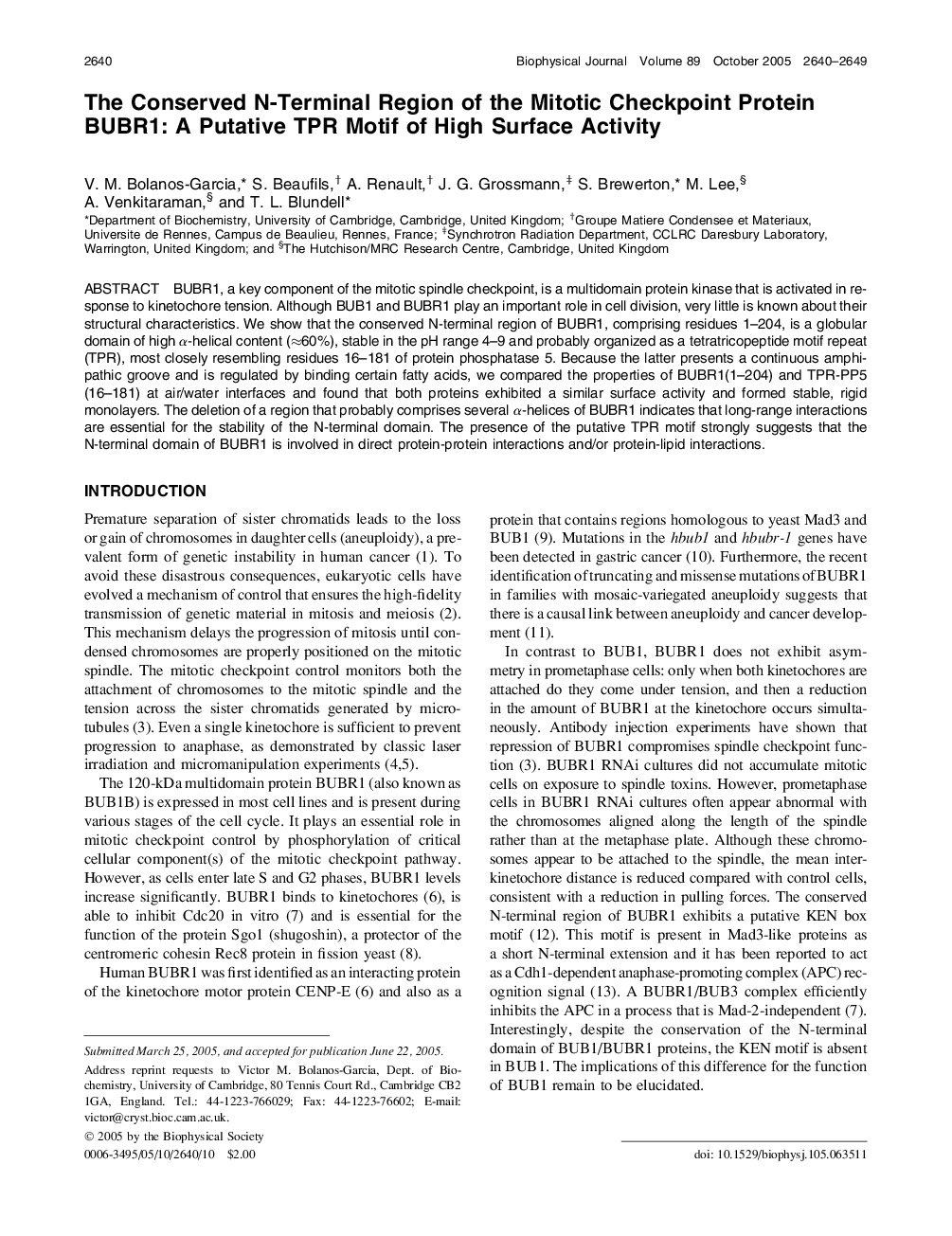| Article ID | Journal | Published Year | Pages | File Type |
|---|---|---|---|---|
| 1959026 | Biophysical Journal | 2005 | 10 Pages |
BUBR1, a key component of the mitotic spindle checkpoint, is a multidomain protein kinase that is activated in response to kinetochore tension. Although BUB1 and BUBR1 play an important role in cell division, very little is known about their structural characteristics. We show that the conserved N-terminal region of BUBR1, comprising residues 1–204, is a globular domain of high α-helical content (≈60%), stable in the pH range 4–9 and probably organized as a tetratricopeptide motif repeat (TPR), most closely resembling residues 16–181 of protein phosphatase 5. Because the latter presents a continuous amphipathic groove and is regulated by binding certain fatty acids, we compared the properties of BUBR1(1–204) and TPR-PP5(16–181) at air/water interfaces and found that both proteins exhibited a similar surface activity and formed stable, rigid monolayers. The deletion of a region that probably comprises several α-helices of BUBR1 indicates that long-range interactions are essential for the stability of the N-terminal domain. The presence of the putative TPR motif strongly suggests that the N-terminal domain of BUBR1 is involved in direct protein-protein interactions and/or protein-lipid interactions.
